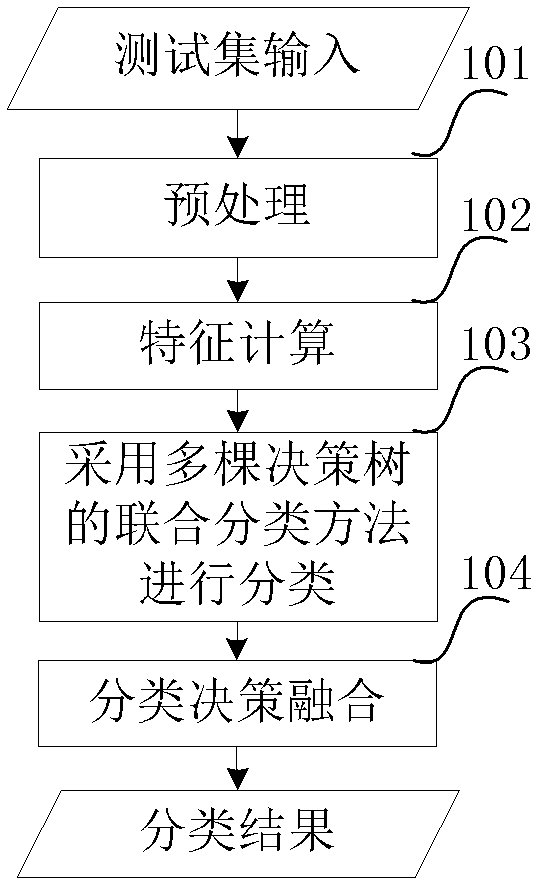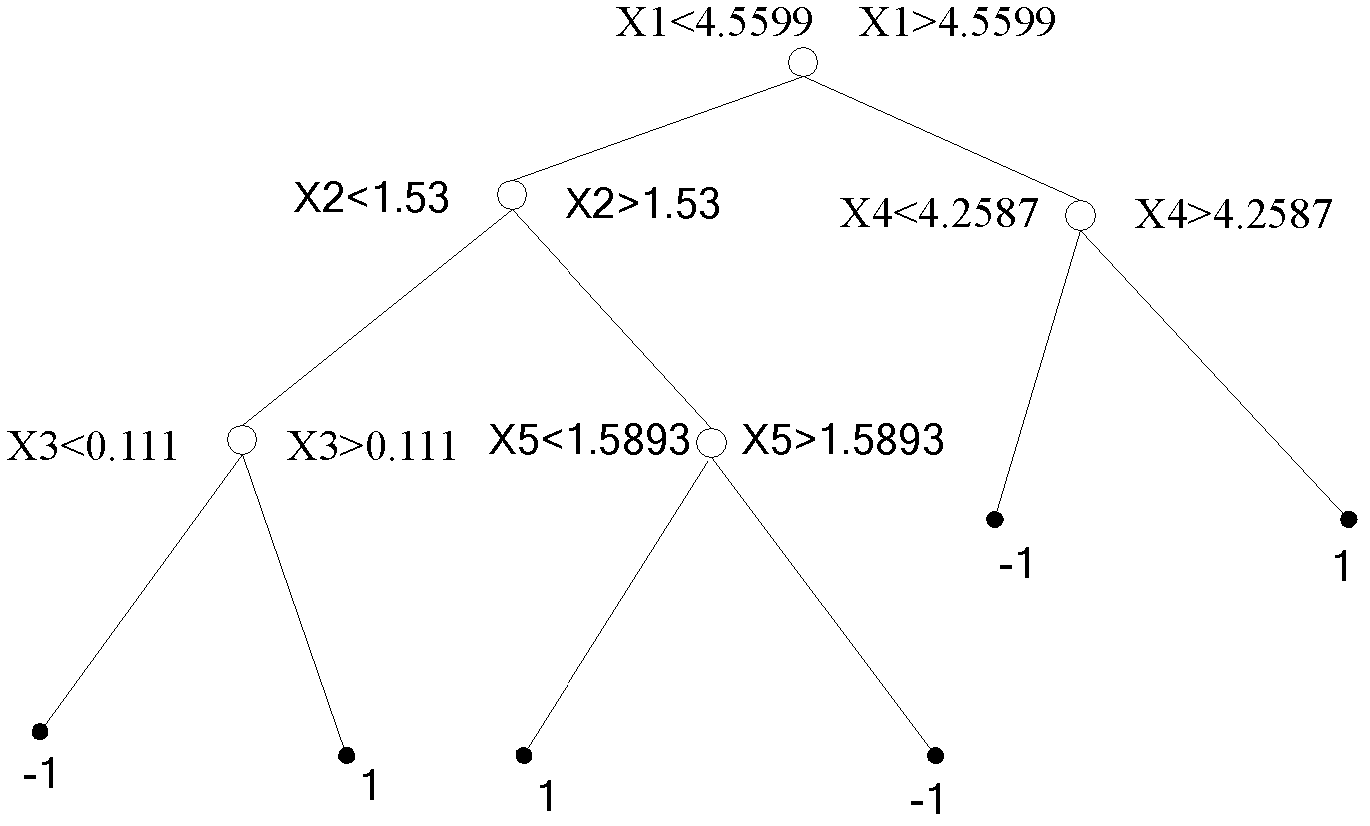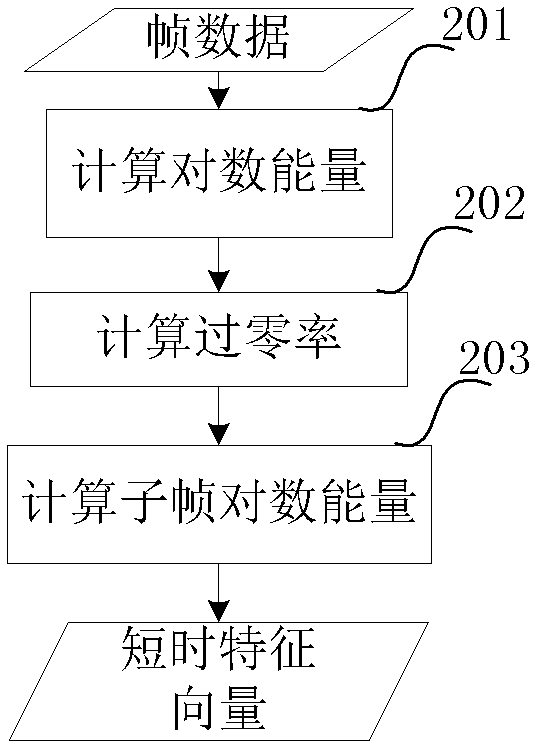Signal classification method and device
A signal classification and signal technology, applied in speech analysis, speech recognition, instruments, etc., can solve the problem of high-efficiency, high-quality encoders, etc., and achieve high accuracy, low latency, and real-time effects.
- Summary
- Abstract
- Description
- Claims
- Application Information
AI Technical Summary
Problems solved by technology
Method used
Image
Examples
Embodiment 1
[0079] This embodiment is the speech / music signal classification under the sampling rate of 32kHz, and the frame length L=1280. Under other conditions of frame length and sampling rate, the method of the present invention is also applicable. Classification process such as figure 1 As shown, the method includes:
[0080] Before classification, the classifier is trained first, including:
[0081] S1, input the training set signal, pre-process the input signal, and filter the input signal. The filter is a high-pass filter, which is used to filter out low-frequency DC components;
[0082] In this embodiment, the direct current component of 0-50 Hz can be filtered out, and of course, the direct current component in a higher or lower range can also be filtered out as required.
[0083] S2: Extract a short-term feature vector from the filtered signal. In this embodiment, the short-term feature vector includes the following parameters: logarithmic energy, zero-crossing rate, and sub...
Embodiment 2
[0131] This embodiment is the speech / music signal classification under the sampling rate of 32kHz, and the frame length L=1280. Under other conditions of frame length and sampling rate, the method of the present invention is also applicable. The method includes:
[0132] 401: Preprocessing and filtering the input signal, the filter is a high-pass filter, used to filter out low-frequency DC components;
[0133] 402: Perform feature calculation on the filtered signal. These include logarithmic energy features, zero-crossing rate features, and subframe logarithmic energy features.
[0134] 403: Calculate the short-term features based on the training set, and then extract n sets of long-term feature vectors with different durations, use the long-term feature vectors with different durations to train separately, and obtain n decision trees after proper pruning. One of the decision trees is figure 2 shown.
[0135] 404: After calculating the short-term features based on the tes...
PUM
 Login to View More
Login to View More Abstract
Description
Claims
Application Information
 Login to View More
Login to View More - R&D
- Intellectual Property
- Life Sciences
- Materials
- Tech Scout
- Unparalleled Data Quality
- Higher Quality Content
- 60% Fewer Hallucinations
Browse by: Latest US Patents, China's latest patents, Technical Efficacy Thesaurus, Application Domain, Technology Topic, Popular Technical Reports.
© 2025 PatSnap. All rights reserved.Legal|Privacy policy|Modern Slavery Act Transparency Statement|Sitemap|About US| Contact US: help@patsnap.com



